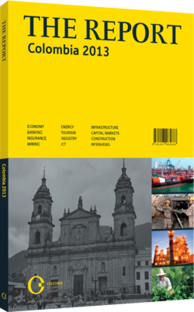OBG talks to Fabio Villegas, CEO, Avianca

Interview: Fabio Villegas
What are the current growth prospects for the regional aviation industry?
VILLEGAS: Latin America’s aviation industry has experienced spectacular growth in the past eight years, which has allowed regional companies to compete internationally in terms of both service and operating efficiency. As a result, two Latin American companies, including Avianca, were among the world’s top five airlines by economic performance in the first quarter of 2013. The decline of traditional state-owned aviation firms has coincided with the rise of private companies, which have proved to be better managed. More recently, there has been greater integration among the region’s emerging markets, which brought an increase in investment and trade flows, resulting in 10% growth in regional air traffic. Traffic between Latin America and the US, for example, has grown by 4%. These positive dynamics have helped to encourage expansion strategies.
Is the domestic industry expanding in kind?
VILLEGAS: The domestic aviation industry has great growth potential, as the purchasing power of the people will keep increasing. Airlines have made progress in all aspects – fleet modernisation, operational improvements and reduced fuel consumption – which has resulted in a large decrease in fares. While fares have dropped from 15% to 20%, there has been growth at the same level. Maintaining such strong growth in terms of passengers carried – at 12% in 2012 – will not be easy, though overall economic growth of above 4% should indicate a rise of 9% in the aviation industry.
Has competition in the sector been intensified by increases in demand?
VILLEGAS: The market is quite competitive for both domestic and international routes. Colombian aviation companies are now achieving high levels of service and management anyway, and the entry of low-cost carriers (LCCs) into the market has contributed to a competitive environment. Although LCCs and conventional carriers are geared toward different segments, all actors need to handle costs very efficiently. The large decline in rates has eased the market’s growth rate.
Is the 2012 extension of El Dorado Airport big enough to cope with expected growth?
VILLEGAS: What El Dorado airport offers today is nothing like what it had just over a year ago. Now we have a much more sophisticated facility, although we must recognise it is still small. The airport originally planned to receive 15m passengers in 2015 and in 2012 it already welcomed 21m. The number of gates is clearly insufficient, forcing airlines to operate through shuttles, with the logistical difficulties that this entails. However, the new airport design makes it relatively easy to carry out new projects and construction. The airport operator and the government are already discussing an upcoming expansion that will upgrade infrastructure and management of operations.
What effect are higher fuel costs having?
VILLEGAS: Fuel accounts for around 35% of an airline’s operating costs and is one of the most critical elements for the sector’s profitability. Airlines invest constantly in more efficient aircraft, achieving savings of 15-20%. Avianca renewed almost its entire fleet in the 2005-13 period, replacing Fokker 50’s with ATR aircraft and incorporating A320 and A330 Airbuses. Companies have also been using financial products to protect their viability against fuel prices.
Are more domestic flights between medium-sized cities currently on the table?
VILLEGAS: Undeniably, the price a user pays to fly from Bogotá to Cartagena, for example, is lower than that of a ticket to a medium-sized city. Operations are much smaller and consequently we use smaller airplanes, making the price of a seat higher. As long as traffic demand among intermediate cities remains stagnant, we will not be able to offer more competitive prices.
You have reached the limit of premium articles you can view for free.
Choose from the options below to purchase print or digital editions of our Reports. You can also purchase a website subscription giving you unlimited access to all of our Reports online for 12 months.
If you have already purchased this Report or have a website subscription, please login to continue.

